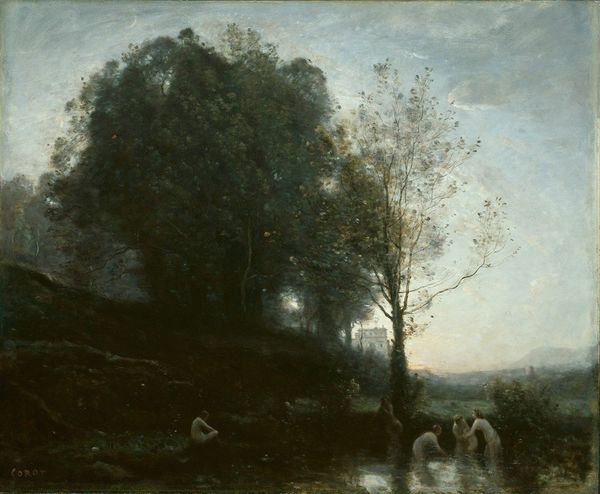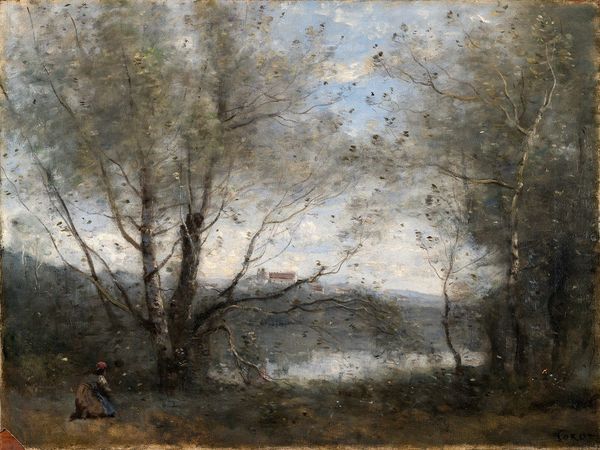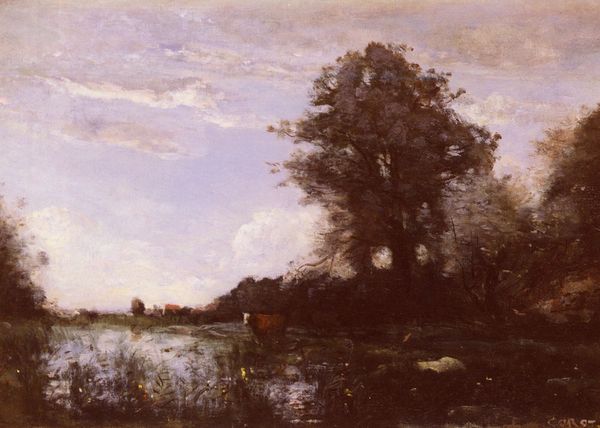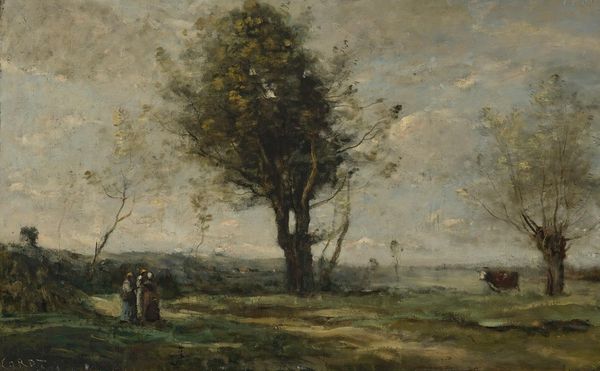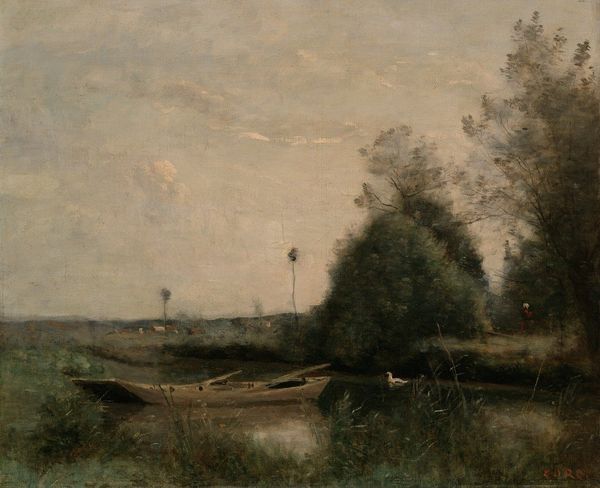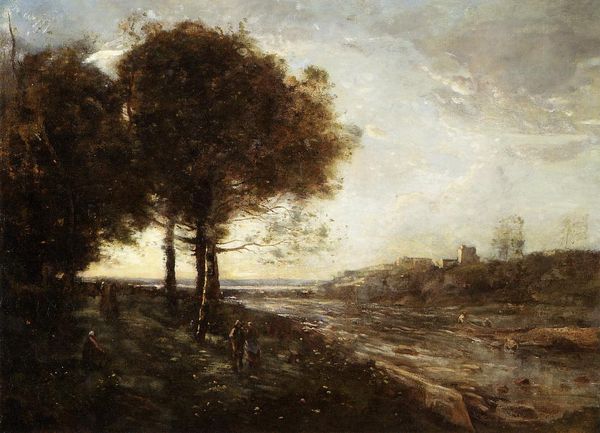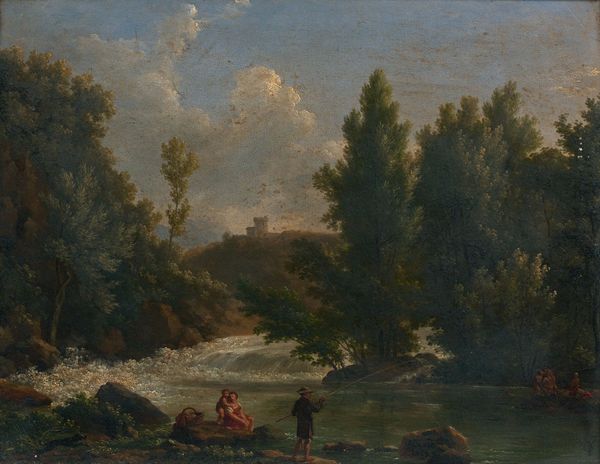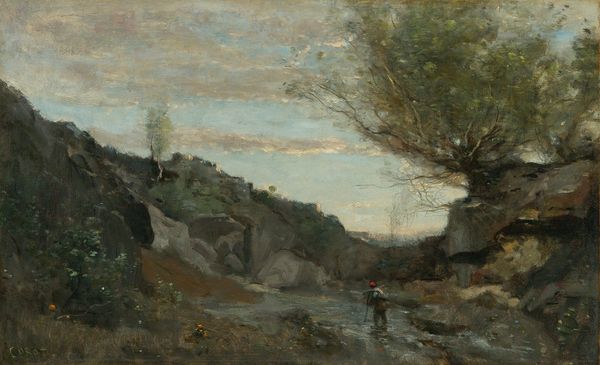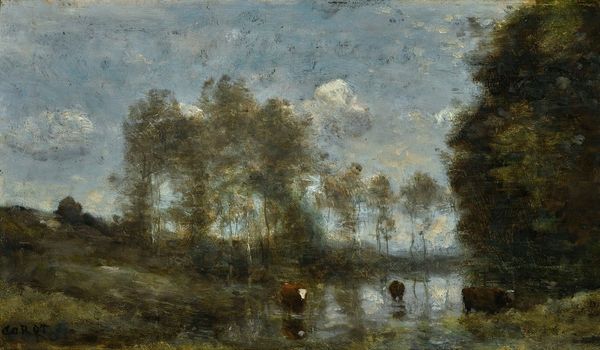
Copyright: Public Domain: Artvee
Curator: This is Camille Corot’s "Boatman among the Reeds," an oil on canvas that he painted around 1865. Editor: Ah, Corot! There's such a stillness, a hazy peace about it. It feels like a whispered memory, doesn’t it? All silvery light and gentle forms… makes me want to find a quiet corner to sit. Curator: Indeed, it exemplifies Corot's mature style—a blending of observation and memory. This painting emerges from his sustained engagement with the French countryside, though the exact location remains, tantalizingly, unknown. Notice the muted palette; those grays, greens, and browns work together. Editor: Those barely-there figures! They blend so seamlessly with the landscape, as if human life were just another ripple in the water. And look at how the light catches on the tips of those reeds. Do you get a sense of loneliness from that solitary boatman? Curator: His work significantly influenced the Impressionists; Corot prioritized capturing atmospheric conditions and the fleeting effects of light. His loose brushwork, so evident here, signaled a break from the precise detailing favored by earlier landscape painters. Editor: Which, of course, upset the Academy and delighted everyone else. He helped set the stage for a new way of seeing and rendering the world! But going back to this work, is the ‘Boatman’ in the title just there for scale? A figure to ground the immensity of nature? Curator: I'd argue Corot employs him to offer us a glimpse into a world where humanity is integrated—a natural presence rather than a dominating force. It's less about accurate depiction and more about conveying an overall mood and a certain feeling about being in nature. Editor: It really is a beautiful escape. Looking at this now, after all our chatter, makes me think that this wasn’t painted from a photograph but more like music; capturing nature’s heart rather than its face. Curator: That's a wonderfully perceptive observation, actually. It speaks to Corot's unique ability to synthesize observed reality with emotional depth, offering us not just a landscape, but a landscape felt.
Comments
No comments
Be the first to comment and join the conversation on the ultimate creative platform.
